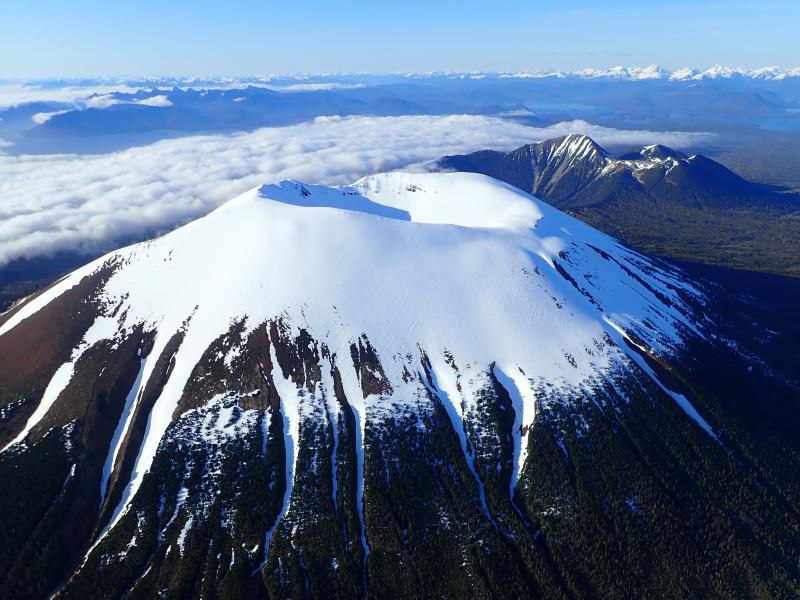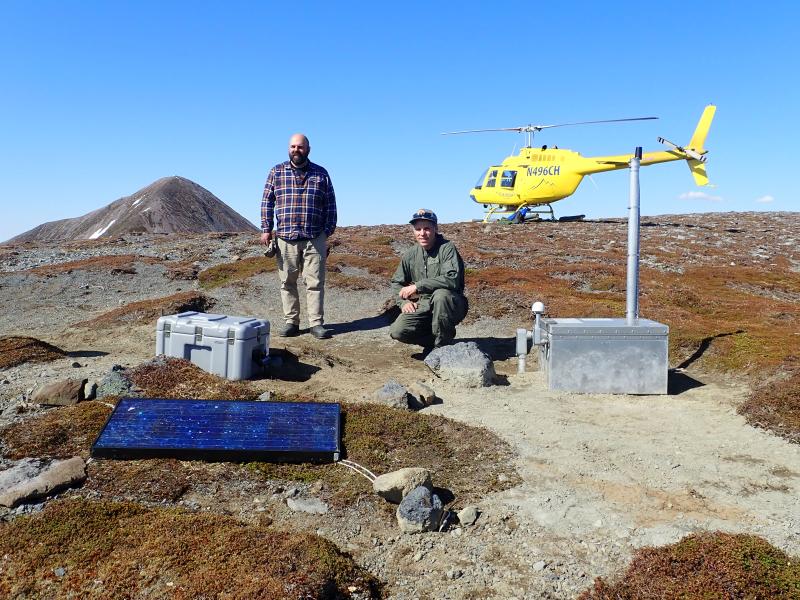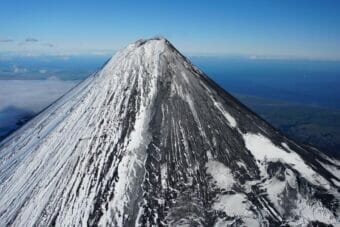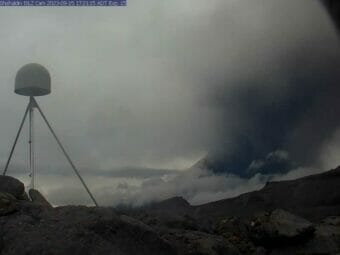
The Alaska Volcano Observatory updated Mt. Edgecumbe’s status on May 9, classifying the volcano as “historically active.” But that doesn’t mean it’s any closer to an eruption.
A lot of people in Sitka have become used to describing Mt. Edgecumbe as “dormant,” but that term really isn’t used by geologists.
“It’s a word that isn’t very well defined in volcanology,” said geologist Cheryl Cameron of the Alaska Volcano Observatory. “It doesn’t have a lot of specific meaning to us. And instead, we tend to talk about volcanoes with how recent or long ago it’s been since they were active, or since they had an eruption.”

Mt. Edgecumbe was formerly known as a “Holocene” volcano because the geologic evidence of its last major eruption dates from the Holocene era, around 12,000 years ago. The AVO now classifies Mt. Edgecumbe as “historically active.”
“For this flavor of active, we don’t require that a volcano has had an eruption,” Cameron said. “So volcanoes can get put into this category through having had a recent eruption, or a suspected recent eruption, or they’ve got a period of deformation or seismic activity or fumarolic activity that we think reflects the accumulation of magma in the crust below the volcano.”
A “recent eruption” usually means within the last 300 years, but the AVO recognizes that Native oral histories indicate an eruption history that goes a few hundred years beyond that.
Being classified as “historically active” doesn’t mean that Mt. Edgecumbe is about to erupt. Rather, the volcano is going to get more attention now from scientists. There are over 50 “historically active” volcanoes in Alaska.
Cameron says a geophysical team was on the ground in Sitka to do a temporary seismic installation on Kruzof Island that includes a global positioning system. The GPS can provide data in real time about any deformation of the crust that might be happening.

Cameron grew up in Sitka. She says the seismic swarm in April that got this ball rolling could have gone unnoticed — but it didn’t.
“My brother sent me the earthquake location, and he said ‘Cheryl, what’s up with this?’ And I said, ‘Well, gosh, let me ask the seismologists,” Cameron said. “So the seismologist said, ‘you know, there’s a swarm.’ And of course, we still needed to do more work and further analysis to determine if the earthquakes were some sort of rather mundane tectonic processes or if they related to the volcano.”
Cameron says the Alaska Volcano Observatory is making plans for a permanent seismic installation on Mt. Edgecumbe and that any volcanic activity would likely come with plenty of advance warning.
“We don’t want people losing sleep over it,” she said.



